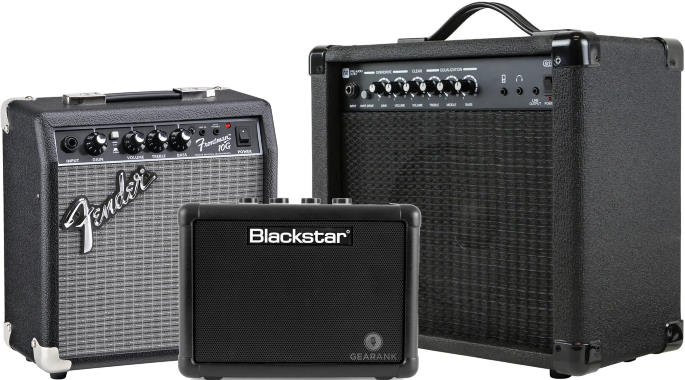
Cheap amps don’t have to be a compromise on quality. We’ll help you sort through great budget options to find the best amp under 100, so you can make the most out of your guitar.
Disclosure
We recommend all products independently of 3rd parties including advertisers. We earn advertising fees from:
• • • • •

• • • • •
Amazon
As an Amazon Associate we earn from qualifying purchases.
• • • • •
More Guitar Amps
With prices soaring, it’s reassuring to know that there are still high quality cheap amplifiers in the sub $100. Here we feature the best of them, some of which are great plug-and-play combo amps for home use, while others are exemplary mobile amps.
Guitar amps in this price range have low wattage and small speakers, so don’t expect them to be loud. But this lower volume also means that you can get great tones without having to disturb your neighbors. Presented here are the top-rated entry-level combo amps that have been making practice and guitar playing more enjoyable for many users.
Among the many manufacturers of cheap guitar amps, big brands like Fender and Blackstar retain their spots. But there is room for brands known for affordability, including NUX, Monoprice, and Rogue.
The Best Guitar Amp Under $100 – 2024
| Gearank* | SRC* | Check Price | ||
|---|---|---|---|---|
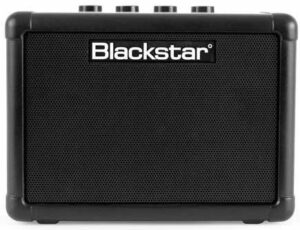 | Blackstar Fly 3 | 93 | 4950+ | |
 | Fender Frontman 10G | 92 | 13600+ | |
 | Marshall MG10G | 93 | 500+ | |
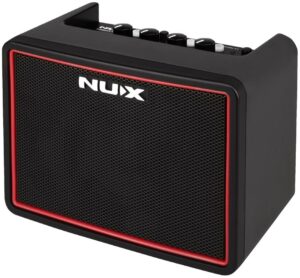 | NUX Mighty Lite BT | 91 | 950+ | |
 | Boss Katana Mini 7W | 92 | 3050+ |
Blackstar Fly 3
Cons
- For low volume use only
- Clean tone is not as good as its overdriven tone
- No USB recording
Pros
- Great mobility, best little amp for practicing anywhere
- Organic sounding overdrive and delay
- Variable amp voicing via Blackstar's ISF knob
- Easy-to-use interface
The Fly 3 is a battery-powered, 3-watt, small amp. It is designed to be a portable amp - a solid state practice amp that you can take anywhere while still being able to produce good Blackstar quality tones.
It's compact and light at just 2 lbs, which makes it super easy to carry around, and since it runs on 6 x AA batteries, you can play it wherever you go.
At 3-Watts and with small 3" speakers, there's not much to expect in terms of volume. But sound quality is still good even with this volume limitation.
Its quieter sound actually makes the Fly 3 the best cheap guitar amp for use in hotels or apartments. It gives your electric guitars great tone without disturbing other tenants.
What makes it a market favorite is its ability to provide great-sounding cranked amp tones at room-friendly volume levels. And it's not just limited to generic overdrive, it lets you change the voicing of the amp from American to British amp flavors via Blackstar's ISF (Infinite Shape Feature) knob.
You can think of this knob as a combination of tone control and amp voicing switch, similar to modelling amps but much simpler. So you get a wide range of tones without the complications of buttons and menus.
Note that you won't be getting good-sounding clean tones with this amp, so if that is what you're looking for, then this is not for you. It would've been nice if it had USB connectivity, so you could easily record your practice or riff ideas, but there's only so much you can expect at this price. It is still quite impressive compared to other solid state amps.
To make your lead lines sound more interesting, you can use its built-in "tape" delay, which models the more "organic" tone of vintage delay devices.
There is also an optional power adapter that you can buy, so you can use it without batteries when a power outlet is accessible.
The Blackstar Fly 3 is as versatile as modeling amps while being superbly portable. Guitarists will find it hard to make excuses to skip practice. And for such a small amp, it delivers great-sounding tones.
Specifications
- Power Rating: 3-Watts
- Speaker Size: 3”
- Effects: Overdrive, Delay
- Controls: Gain, Volume, Overdrive Switch, EQ, Delay Level, Delay Time
- Inputs/Outputs: ¼”, AUX-In, Headphone
- Weight: 2 lbs
- Dimensions (Height x Width x Depth): 6.6” x 5” x 4”
| Website | Source | *Rating Value |
| Premier Guitar | Shawn Hammond | 87.5/100 |
| The Gear Page | Jackstand Johnny | 96/100 |
| Guitar Songs Masters | Alon Cooper | 90/100 |
Demo
Fender Frontman 10G
Cons
- Limited voicing options
- Limited controls
- Low-volume use only
Pros
- Classic Fender clean tones
- Straightforward controls
- Old-school aesthetics
- Good low to mid gain overdrive
The Frontman 10G packs the iconic Fender amp signature clean tone along with classic aesthetic styling. And it's all packed into a compact and affordable practice amp. Its continued success is proof that even in this era of amp modeling, there's still room for good quality old-school amps.
The strength of this amp is its genuine Fender sound (clean tone), based on classic Fender amps. It has detailed highs that work great with many different musical styles. And this makes the amp sound responsive and lively.
I've even used these as an acoustic guitar amp, and it does the job well for practice. As expected, it won't be as clean as dedicated acoustic guitar amps.
And it doesn't have deep lows, but it has enough to make this a great amp for practice. It would've been nice if it had a mid EQ knob to emphasize the highs better.
There's a button that engages its built-in overdrive. It adds an open and mild-sounding distortion effect that actually sounds good at lower gain settings, viable for blues and even rock.
It gets muddy as you go higher, so if high gain distortion is what you want, then this is not for you.
At 10 Watts and with a 6.5" speaker, it doesn't have a lot of headroom, but it is good enough for playing guitar along with your favorite tracks.
It has an auxiliary mini jack for plugging in your media player and it also has a headphone output for silent practice.
All these features are packed inside a closed back cabinet that sports Fender's old-school combo amp design.
With the Frontman 10G, what you see is what you get. For a guitar amp under 100, this affordable amp gives you the classic Fender look and sound, And it does so with simplistic control options that will not distract you from enjoying your practice.
Specifications
- Power Rating: 10-Watts
- Speaker Size: 6”
- Effects: Overdrive
- Controls: Gain, Volume, Treble, Bass, Overdrive Switch
- Inputs/Outputs: ¼”, AUX-In, Headphones
- Weight: 8.5 lbs
- Dimensions (Height x Width x Depth): 11” x 10.25” x 5.75”
| Website | Source | *Rating Value |
| Equipboard | francesco_sartori_2 | 60/100 |
| Audiofanzine | le troll | 80/100 |
Marshall MG10G
Cons
- Limited Power
- No Effects Loop
Pros
- Portable
- Classic Marshall Tone
- Takes pedals well
The Marshall MG10G is a compact and affordable guitar amplifier with solid-state technology for precise and reliable sound. It offers a range of features, making it an excellent choice for beginners and seasoned players.
One of the MG10G's most notable advantages is its portability. It weighs just over 10 pounds and's incredibly lightweight and easy to carry around. Whether practicing at home or on the go, you won't have to worry about lugging a heavy amp around.
Despite its budget-friendly price, the MG10G delivers that classic Marshall sound many guitarists love. When cranked up, it produces a rich and powerful tone perfect for rock and metal genres. It also features two channels, clean and overdrive, allowing you to switch between different tones easily.
Another great feature of this amp is the contour control knob, which lets you adjust the midrange frequencies to shape your sound to your liking. Additionally, the headphone output allows for silent practice, making it perfect for late-night jam sessions without disturbing others.
The MG10G also comes with an aux input, allowing you to connect external devices such as your phone or MP3 player to play with your favorite tracks. However, it's worth noting that this amp has some limitations. With only 10 watts of power, it may not be suitable for playing in larger venues or with a band. Additionally, it lacks an effects loop, so if you're into using effects pedals, consider a different amp. Finally, the 6.5-inch speaker provides decent sound, but it won't match the fullness of larger amps.
The Marshall MG10G is a solid choice for a versatile and affordable guitar amp. Its lightweight and portable design, classic Marshall tone, and helpful features make it an excellent choice for beginners, home practice, and small gigs.
Specifications
- Power Rating: 10-Watts
- Speaker Size: 6.5"
- Effects: Overdrive
- Controls: Volume, Contour
- Inputs/Outputs: ¼”, AUX-In, Headphone
- Weight: 10.5 lbs.
- Dimensions (Height x Width x Depth): 12.3" x 11.65" x 6.8"
Demos
NUX Mighty Lite BT
Cons
- For low volume use only
- Gets a bit muddy when cranked too high
Pros
- Feature-packed mini amp
- 3-Channels with delay and digital reverb
- Portable and mobile
- Bluetooth compatibility
The NUX Mighty Lite BT is as feature packed as it gets for an affordable and portable guitar amp. It lets you switch between 3 channels - clean, overdrive, and distortion.
The overdrive channel in particular is where it really shines, full sounding and dynamic like a tube amp. High gain rock tones from its distortion channel are also quite good, but given its small size, it does get muddy at higher gain settings.
Still, it can be a good metal amp as long as you're not expecting deep lows. In any case, it's unfair to expect this to be as pristine sounding as bigger and more expensive tube amps. The clean channel is OK, it has a warm voice that may or may not appeal to you, depending on your preference.
It also comes with two of the most commonly used effects - delay and reverb.
What makes this amp stand out from the competition is the built-in drum loops, drum patterns, and metronome. This makes the Mighty Lite BT a true student-friendly piece of gear. For real-time control over the timing of delay effect and drums, it even comes with tap tempo control.
For the price, this electric guitar amp also lets you wirelessly stream your favorite tracks via Bluetooth. Feature and spec-wise, you'll be hard-pressed to find one that can match it in this price range.
The amp can run on a 9V power supply or via USB connection - which is very convenient given that we all have tons of USB cables available. It can also run on 6 x AA batteries for true mobility.
Note that the Nux Mighty Lite BT is roughly around the same size as the Blackstar Fly 3, so it is also a viable tool for keeping your chops up when on the go.
If you're looking for a student-friendly mobile guitar amplifier, then definitely check out the NUX Mighty Lite BT.
Specifications
- Power Rating: 3-Watts
- Speaker Size: 3”
- Effects: Overdrive, Delay
- Controls: Knobs: Gain, Volume, Tone knob, Delay/Reverb | OD/DIST, Drums, Play/Pause, Tap
- Inputs/Outputs: ¼”, AUX-In, Headphone, USB
- Weight: 2.25 lbs
- Dimensions (Height x Width x Depth): 6.5” x 3.9” x 4.9”
| Website | Source | *Rating Value |
| YouTube | Landon Bailey | 97/100 |
Demo
Boss Katana Mini 7W
Cons
- Limited wattage
- Noisy when batteries are low
Pros
- Lightweight and Portable
- Versatile
- Battery Powered
- Excellent value
The Boss Katana-Mini, a compact and versatile guitar amplifier, stands out with its unique features. Despite its small size, it delivers a powerful performance. Weighing under 3 pounds, it offers the convenience of running on six AA-size batteries or an optional AC adapter. The analog three-band EQ allows you to shape your tone, and the built-in tape-style delay with controls for level and time adds a unique touch to your sound.
The Katana-Mini, with its three amp character settings: clean, crunch, and brown, offers inspiring tones in a small footprint. The brown setting, in particular, provides smooth hi-gain tones reminiscent of a hot-rodded Boss BD-2w Blues Driver pedal with dynamic response. You can power it with AA batteries, making it great for outdoor use or practice. Priced at a wallet-friendly $99.99, the Katana-Mini offers excellent value for its features and sound quality.
While more than the 7-watt output may be required for larger venues or band rehearsals, the Katana-Mini is perfect for home practice or outdoor performances. Its compact design ensures easy transport, and the built-in tape-style delay adds a touch of ambiance to your sound. Some players might miss having additional tone-shaping controls like midrange adjustment or onboard effects, but the simplicity of the Katana-Mini controls is a pro for others. The Boss Katana-Mini is a phenomenal practice amp, especially for metal, hard rock, and punk genres.
Specifications
- Power Rating: 7-Watts
- Speaker Size: 4"
- Effects: Delay
- Controls: Volume, Equalizer, Delay
- Inputs/Outputs: ¼”, AUX-In, Phones/Rec Out
- Weight: 2.6 lbs.
- Dimensions (Height x Width x Depth): 7.12" x 9.06" x 4.6"
Demo
Things to Consider When Buying a Cheap Guitar Amp
Here we provide additional information that can help you sort through good amps in the entry-level price range. If you want to nudge up the quality you may want to look at the best guitar amp under $200. By knowing these considerations, guitar players can lock in on the best cheap amp that fits their needs and musical preferences.
- The power rating of an amp, also known as its wattage, is a good indicator of the amount of volume an amp will have. However, it’s important to know how wattage and volume relate to each other.
A 10-watt amplifier is going to be (roughly) twice as loud as a 1-watt amplifier and half as loud as a 100-watt amplifier. Wattage is a better indicator of “headroom”, which is how loud an amplifier can be turned up before it starts to distort. Good cheap amps in the sub $100 price range will be around 10 Watts or lower. This makes them ideal for home practice use. Note that budget amps generally don't have speaker output because of their low power rating. For a first guitar amp, you don't really need too much power and modern solid state amp features.
- Speakers come in all shapes and sizes, with the most common (and tonally balanced) being 12” speakers. The bigger the speaker the warmer and more bass-focused its tone is going to be, while smaller speakers generally have a thinner and brighter tone. Given the price limitation of $100, the best budget guitar amps usually have small speakers. But since these electric guitar amps are intended for practice, the lack of bass response may not be as noticeable. This also means that trebly amps like those from Vox amps work really well.
- Almost every amp comes with tone shaping controls, otherwise known as an EQ section (generally labeled on an amplifier as bass, middle, and treble). These controls change the tone of your instrument. Tone is best defined as the combination of harmonics, sustain, and frequency response (which is controlled by the EQ sections mentioned above) produced by your guitar and amplifier. In this price range, 2-band EQ controls are common, allowing for bass and treble adjustments. Some do provide more control, especially those with DSP (Digital Sound Processing) capabilities.
- Amp modeling allows a single amp to have the voicings of different amps. These features give you more tones to play with and are especially useful for those who need different tones for different musical genres. Beginners can also use amp modeling to learn the ropes of the different amp voicings. The main downside to this feature is that the many voicings can be distracting, especially for those who are just starting to play guitar. Amps with this feature are usually priced over $100, but they can be bought for cheap in the second-hand market.
- Many amps come with built-in effects, with the most commonly found ones being reverb and overdrive. Overdrive is what gives rock, blues, and metal their trademark tone. Reverb makes your guitar sound like it’s being played in a large room. Given their price, don't expect them to have the same quality and control features as a dedicated pedal fx.
The cool thing about built-in effects is that they give you more options when you’re dialing in your tone, and they make it possible to play different genres. However, they do increase the complexity of the amp. Amps that have more features have more controls, and this means steeper learning curve. Most of the time, the benefits of complex features outweigh the drawbacks, but it will depend on how you will be regularly using the amplifier. Note that if you're looking for more features like built in tuner, and extra effects features, you'll have to extend your budget beyond $100.
- Many amps in this price range come with a headphone jack, which lets you plug in your headphones for silent practice. Other cheap amps have a line out jack, which lets you go straight to a PA system or recording console. More modern amps allow for USB connectivity, for direct recording much like an audio interface. Others even come with bluetooth connectivity but they are often priced above $100. Some amps also come with software that lets you edit various parameters of your amp.
There are also output jacks that allow you to plug your amp into an extension speaker, that either works with or separate from the speaker already in your amp. This can be useful for those who want more volume and projection.
- Since amps in this entry-level price range are usually small, most of them are inherently portable. Amps here usually have a lightweight and compact profile that make them easier to carry around. Some can even run on batteries for true untethered mobility. If you want to keep your chops up even as you move from place to place, then mobility should be high on your list of things to consider. Speaking of mobility and practice, headphone amps are even more portable and are great for quiet practice.
Power Rating
Speaker Size
Tone Shaping Controls (EQ)
Amp Modeling
Built-In Effects
Outputs
Portability
Can a good amp improve the sound of cheap electric guitars?
Best Amp Under 100 Selection Methodology
The first edition was published in 2018.
The goal of this guide is to feature the best electric guitar amps under 100. So we focused our research and analysis on cheap amplifiers that are rating highly in this beginner-friendly price range. Before you ask about your favorite Boss or Orange amp, note that some highly rated budget options are too expensive to be included in this guide. This includes the popular Orange Crush 12 from Orange Amps, Boss Katana Mini, Vox Pathfinder and other guitar amplifiers priced above $100.
Aside from ratings and popularity, we also considered accessibility. We only feature cheap guitar amps that are readily available from major US retailers. These filters resulted in a list of 23 candidate amps, which is fewer than the previous edition because many amps have increased their prices above the $100 ceiling since the previous edition. We then gathered and analyzed relevant reviews, ratings, and recommendations, including the most recent ones. We ended up with over 45,700 data sources. All these data were then processed using the Gearank Algorithm which gave us the rating scores out of 100 that you see above. Finally, we selected the highest-rated options to recommend. For more information about our methods see How Gearank Works.
About the Author and Contributors
Here are the key people and sources involved in this guide's production - click on linked names for information about their music industry backgrounds.
Lead Author & Researcher
Alexander Briones
I have been writing about and researching music gear for many years, all while serving as a music director at my local church. I engage in guitar playing and singer-songwriter stints, in addition to mentoring young musicians and teaching guitar and bass.
I used an older version Fender Frontman for many years, and it served me really well. I have since given it to my dad, and it still works without any hitch! These days, beginners have it better with full featured portable amps like the Blackstar Fly 3 and NUX Mighty Lite BT. Not only are they portable, they also sound good and are convenient to use.
Contributors
Alexander Briones: Editing.
Jason Horton: illustrating.
Media
Main/Top Image: Compiled using photographs of the Fender Frontman 10G, Blackstar Fly 3 and Monoprice 611720.
The videos have been embedded in accordance with YouTube's Terms of Service.
The individual product images were sourced from websites, promotional materials or supporting documentation provided by their respective manufacturers.
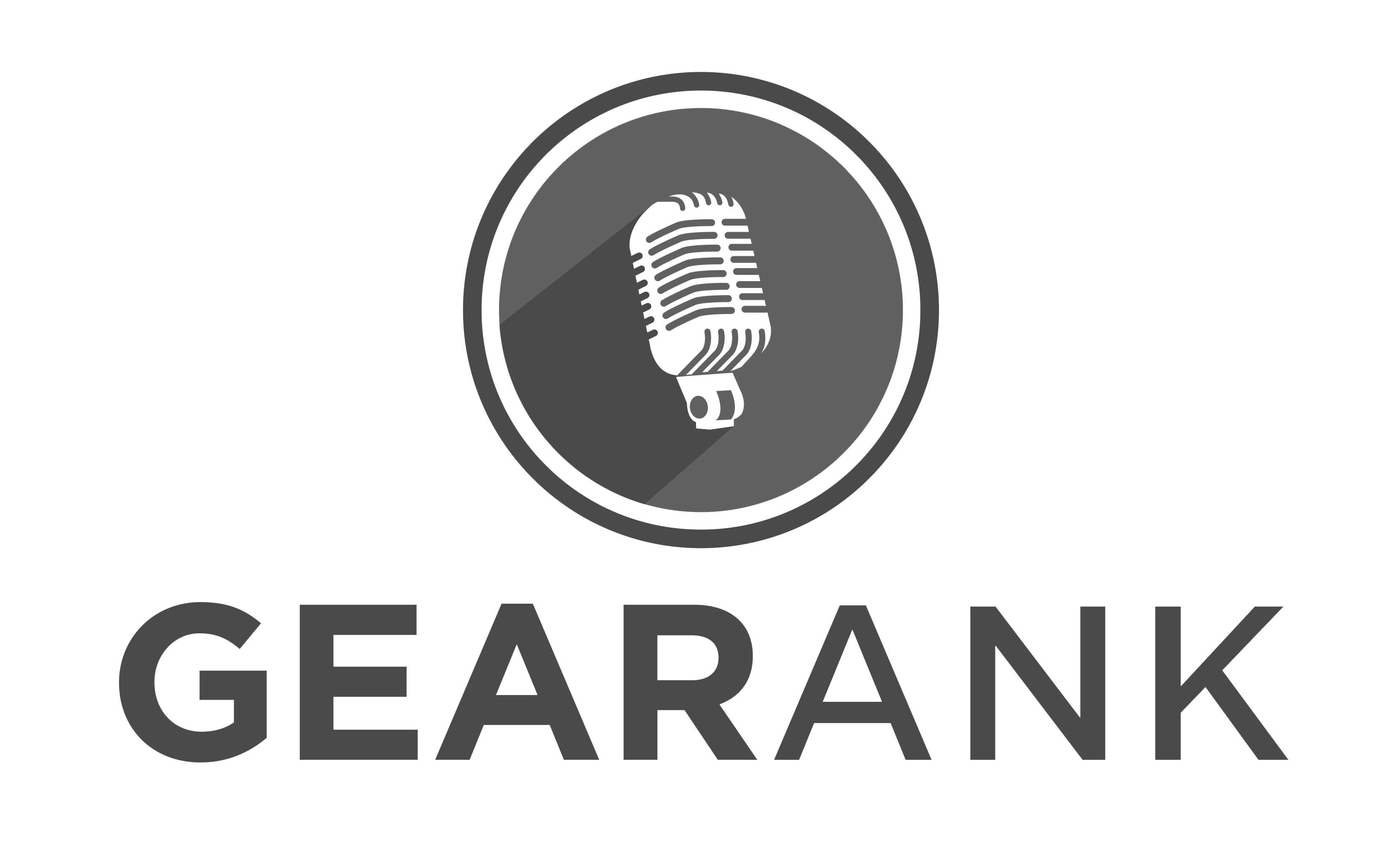
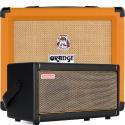
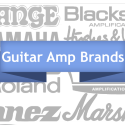 The Best Guitar Amp from the
The Best Guitar Amp from the 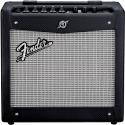
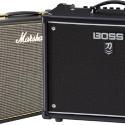
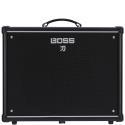
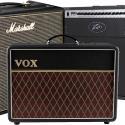
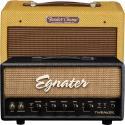 The Best Small / Low Watt
The Best Small / Low Watt 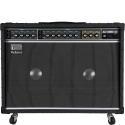
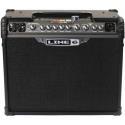
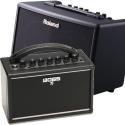
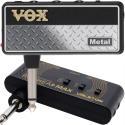
The following amps have been removed from the recommended list above due to them no longer being priced below $100:
We’ve removed the Vox Pathfinder 10 due to a price increase that put it above this guide’s price limit.
Publication of our July 2021 Edition resulted in the following amp being removed from the recommended list above: Rogue G10.
As a result of our August 2020 update, the following amps came off our recommended list above, but you can still see our analysis of them:
Today we removed the Fender Champion 20 from the recommended list above due to a price increase.
A combo amp has been redefined since modelling and effects have become pretty much standard. Having Overdrive is no longer considered a combo amp by anyone’s definition/interpretation. Even adding reverb is more old school combo category. And the battery operated amps, essentially a park bench practice amp, those are a different category altogether. That said, the Fender Champion 20 is the only one of this bunch that anyone would classify as a combo amp. The rest of them are basic relics from an era long past. Doesn’t mean they aren’t any good, they’re just practice amps either way. Saying that clean mode/tones are an amps strongest, commended/revered feature is just laughable in 2019, any amp should play clean tones, a Donner DEA-1 10W saves you a few bucks. easily as good as a Frontman 10g and has a 3 EQ vs the Fenders 2 EQ controls.
A combo amp isn’t defined by effects or signal processing but simply by the fact that they have the amp and speaker combined into a single cabinet.
The other type is an Amp Head which typically doesn’t include speakers – like these.
What you’re talking about sounds more like a description of Solid State Amps, and I would agree that modeling/effects are changing the definition of those.
As a result of the July 2019 update the following amps came off our recommended list above but you can still read what we have to say about them: